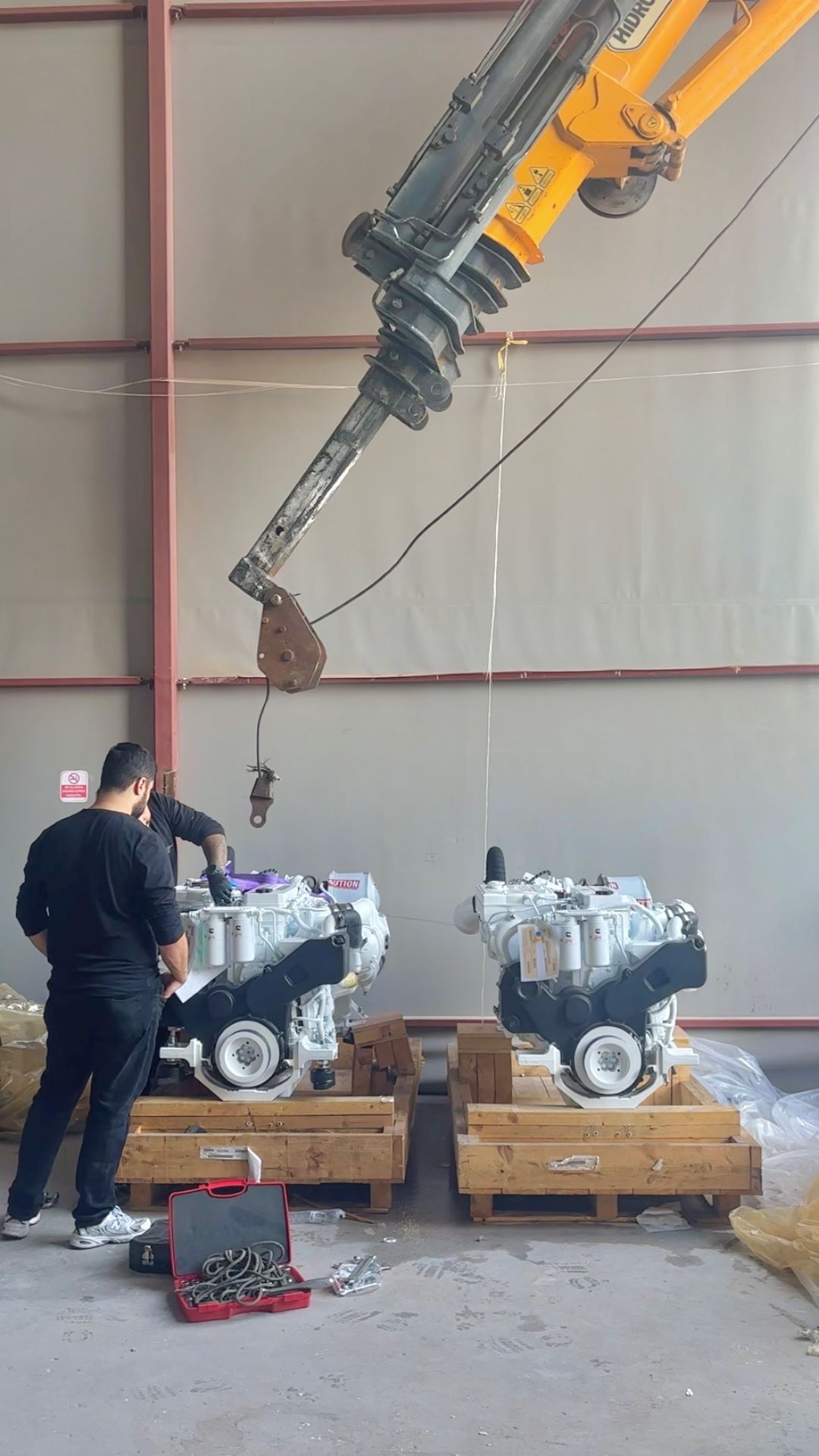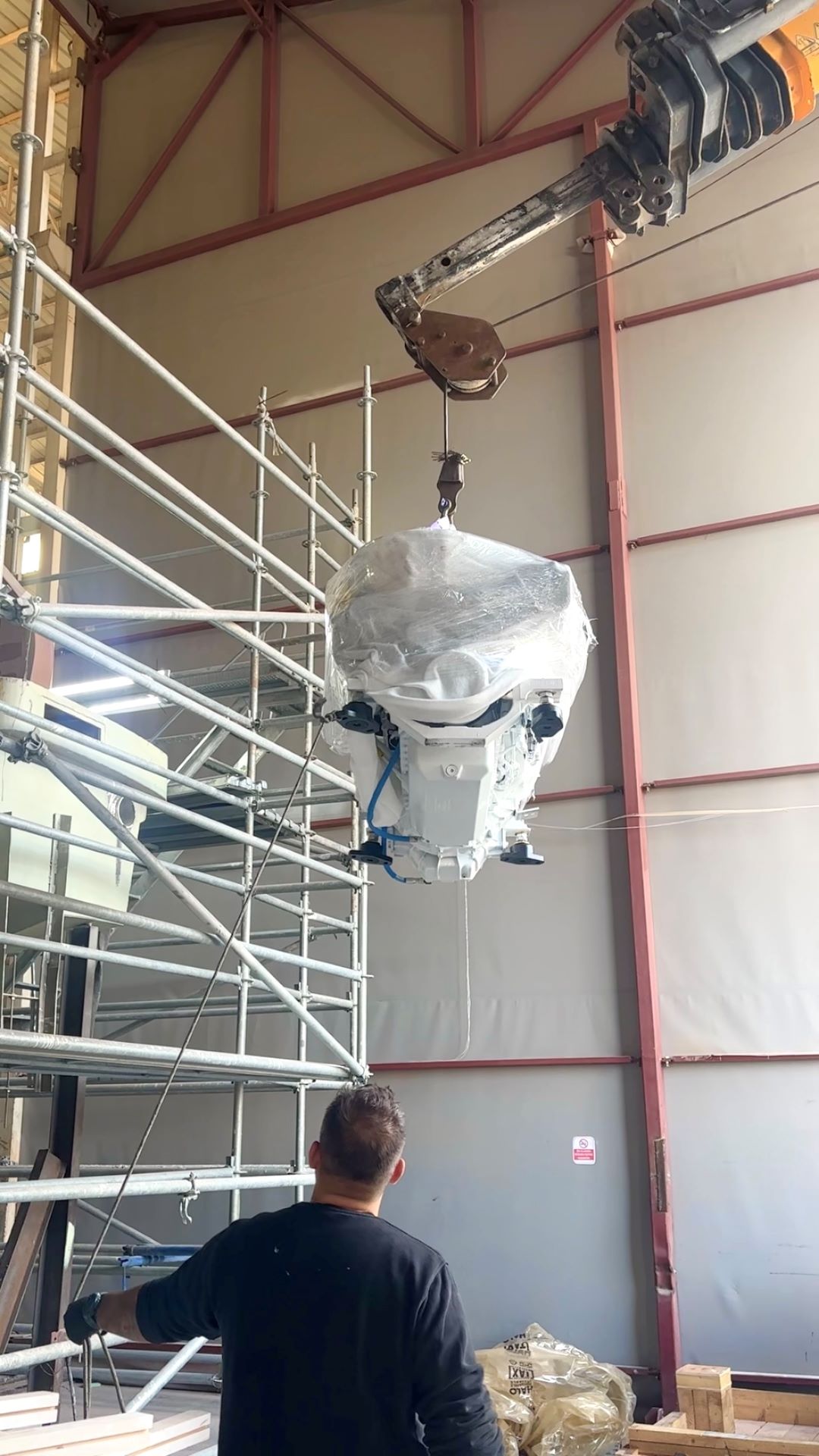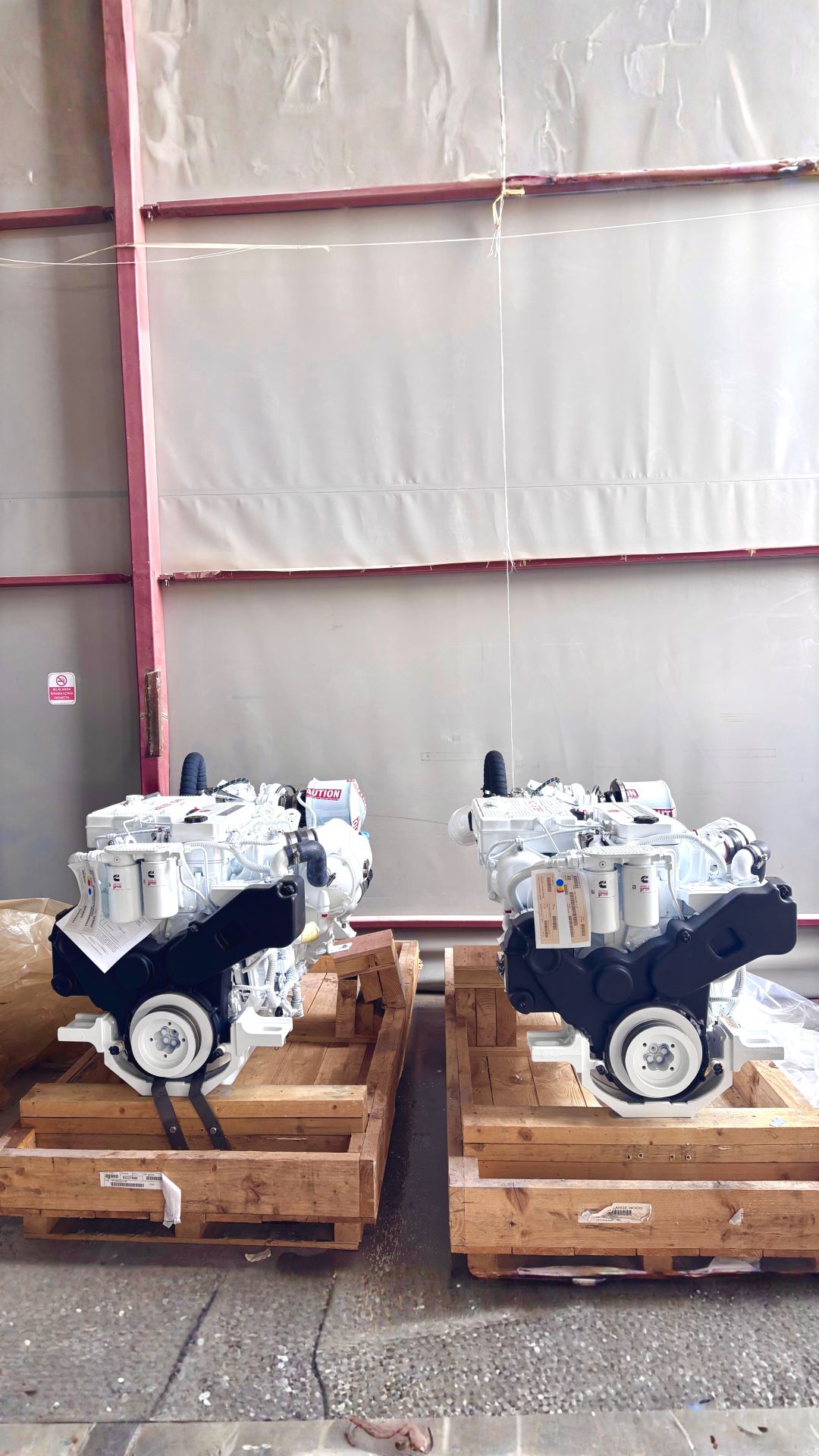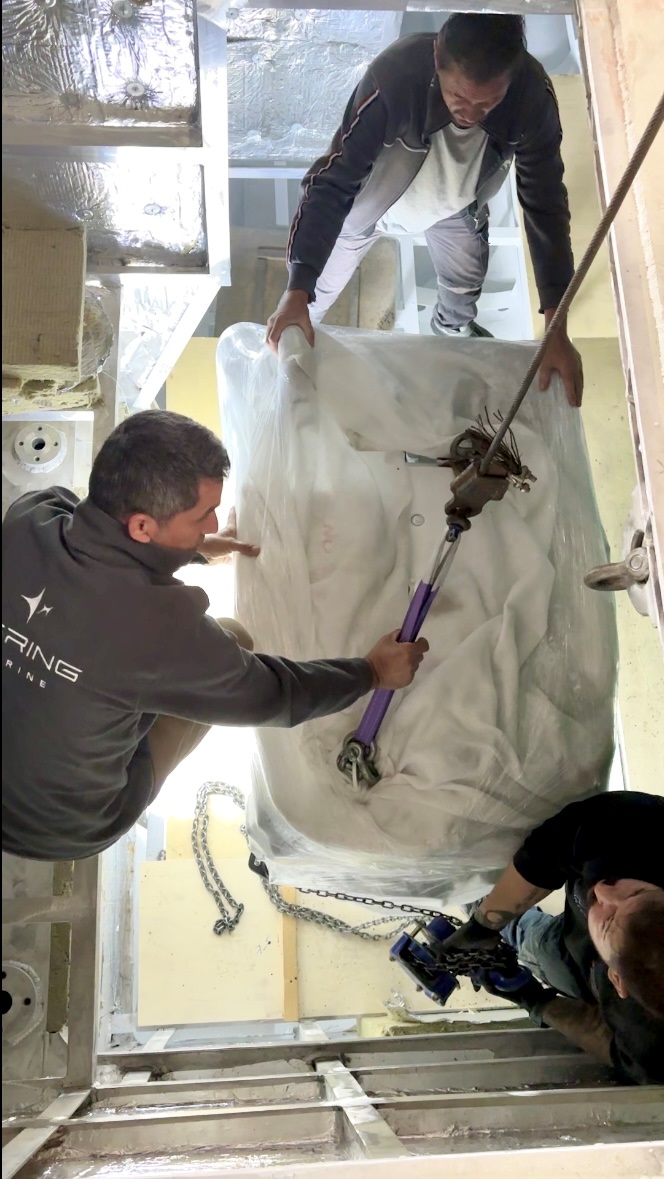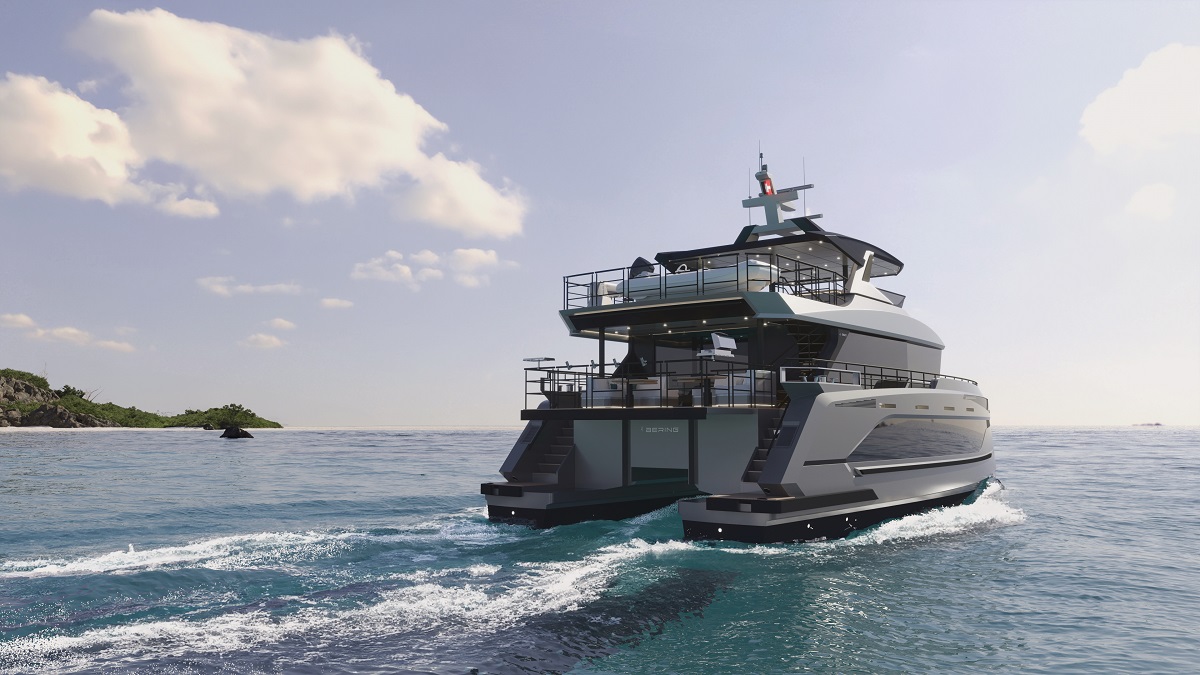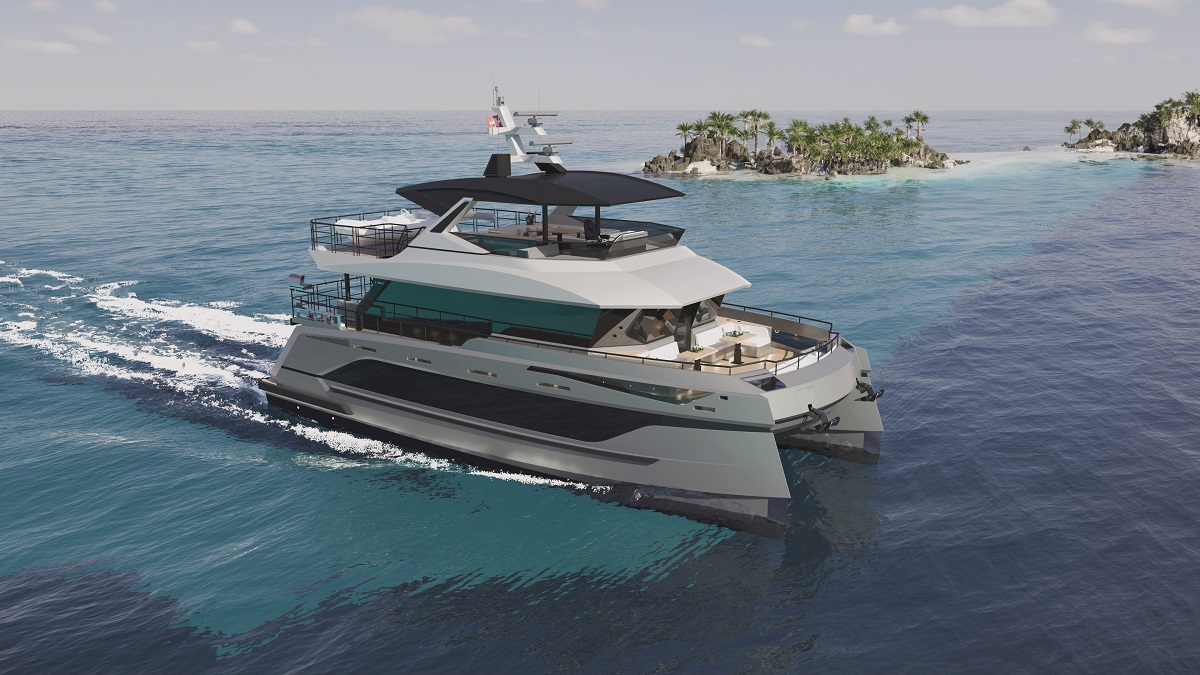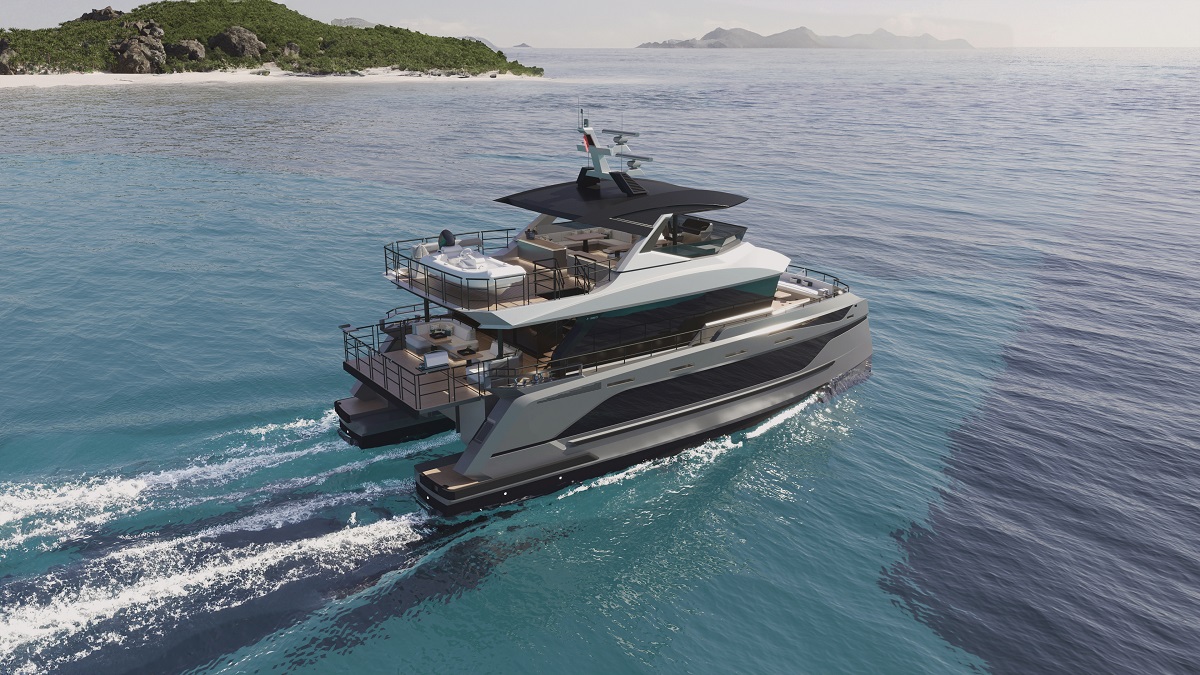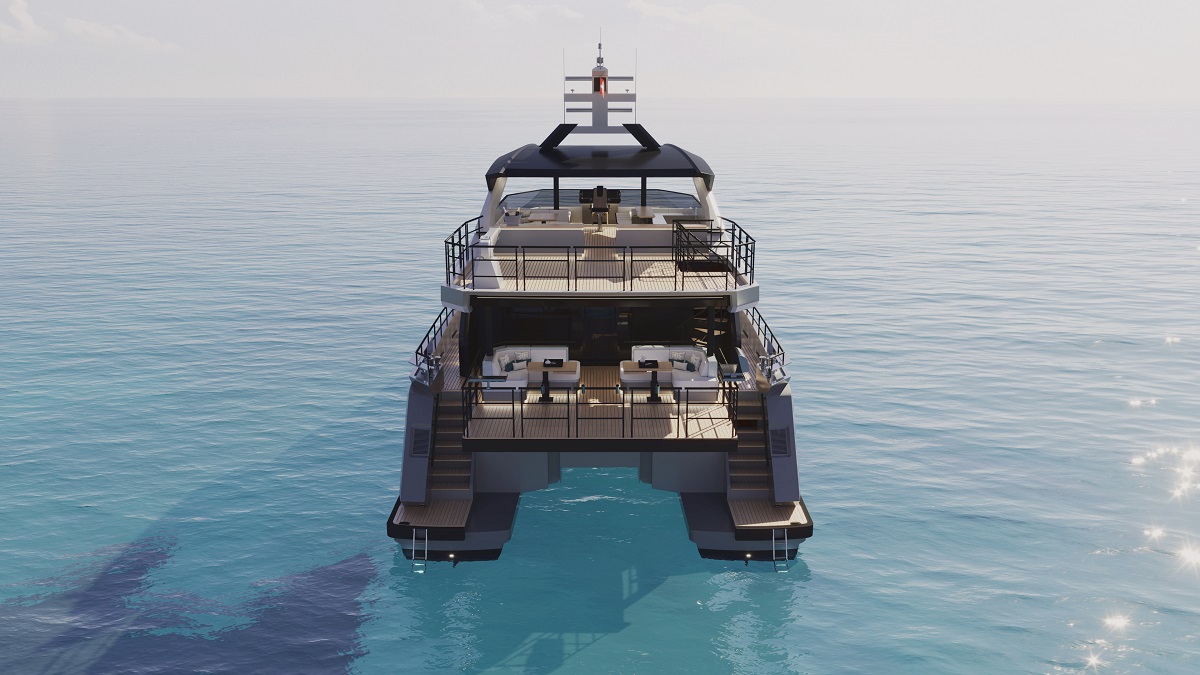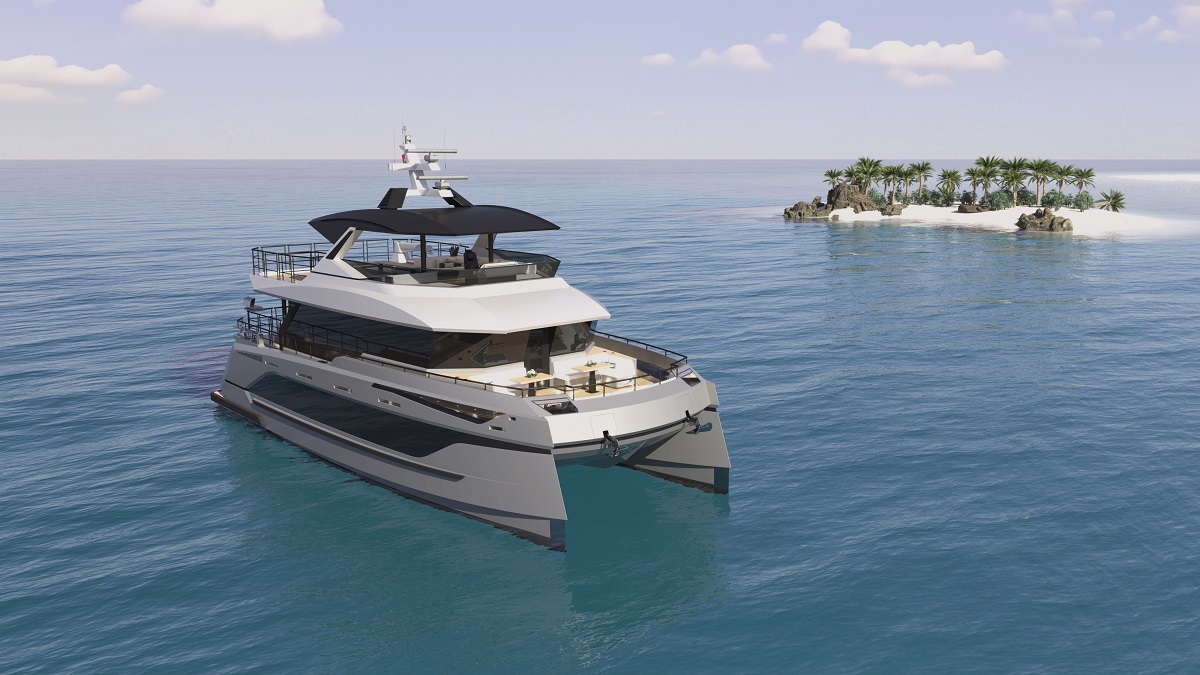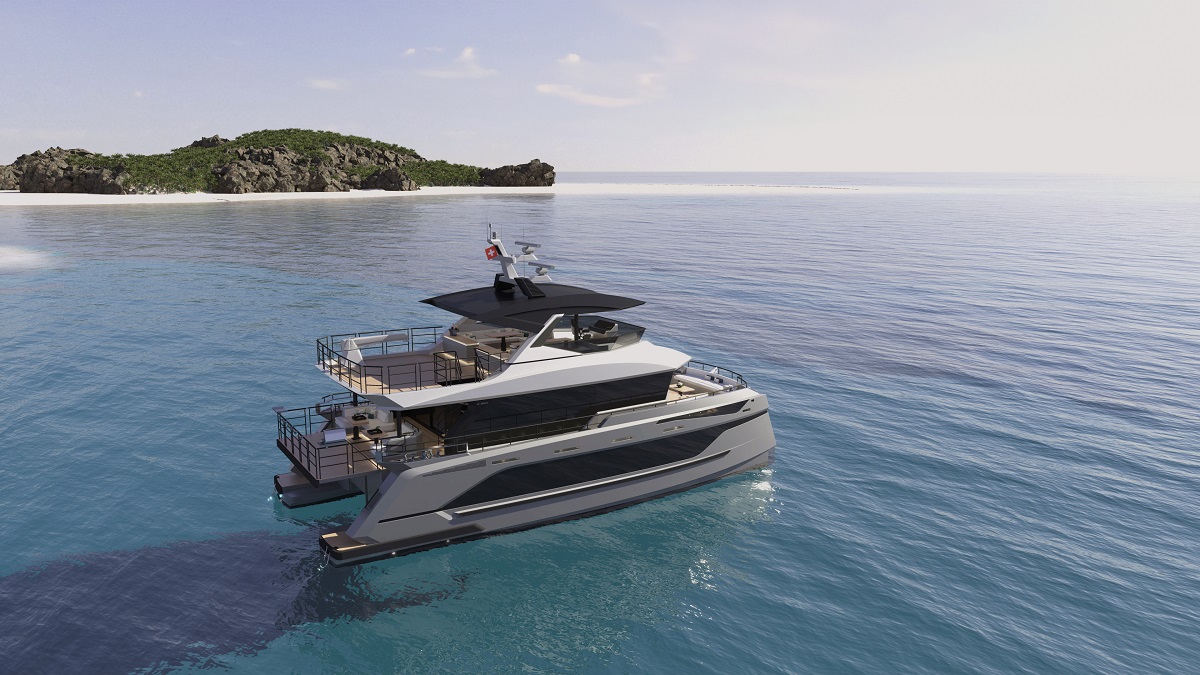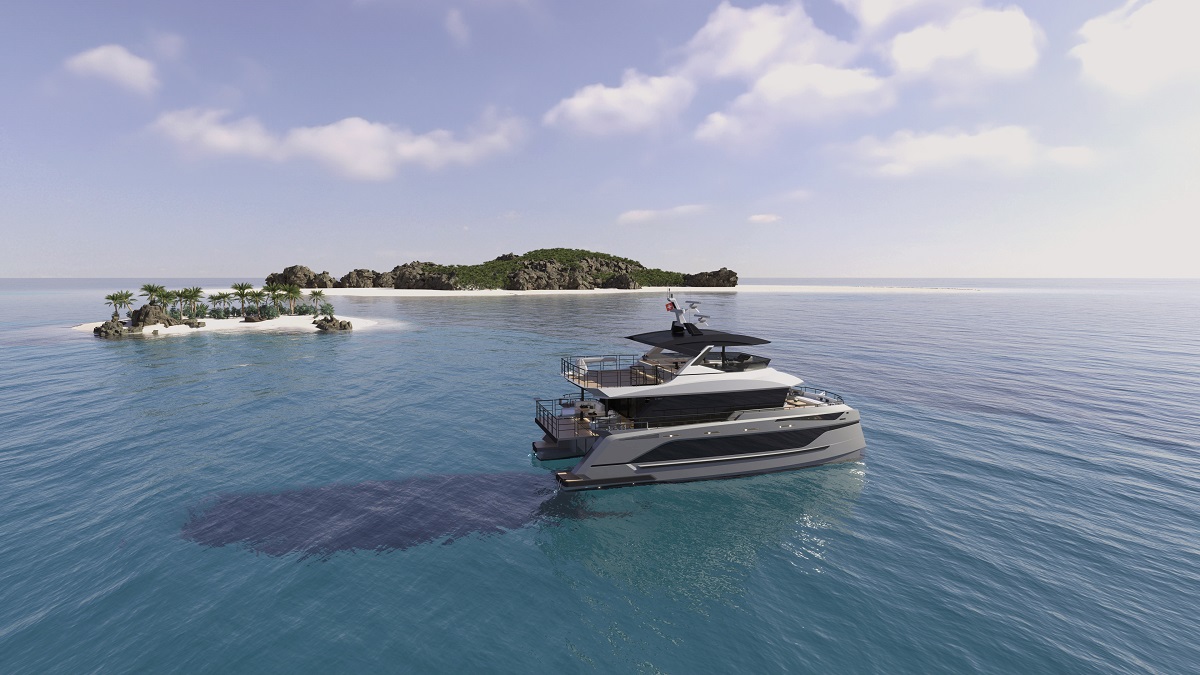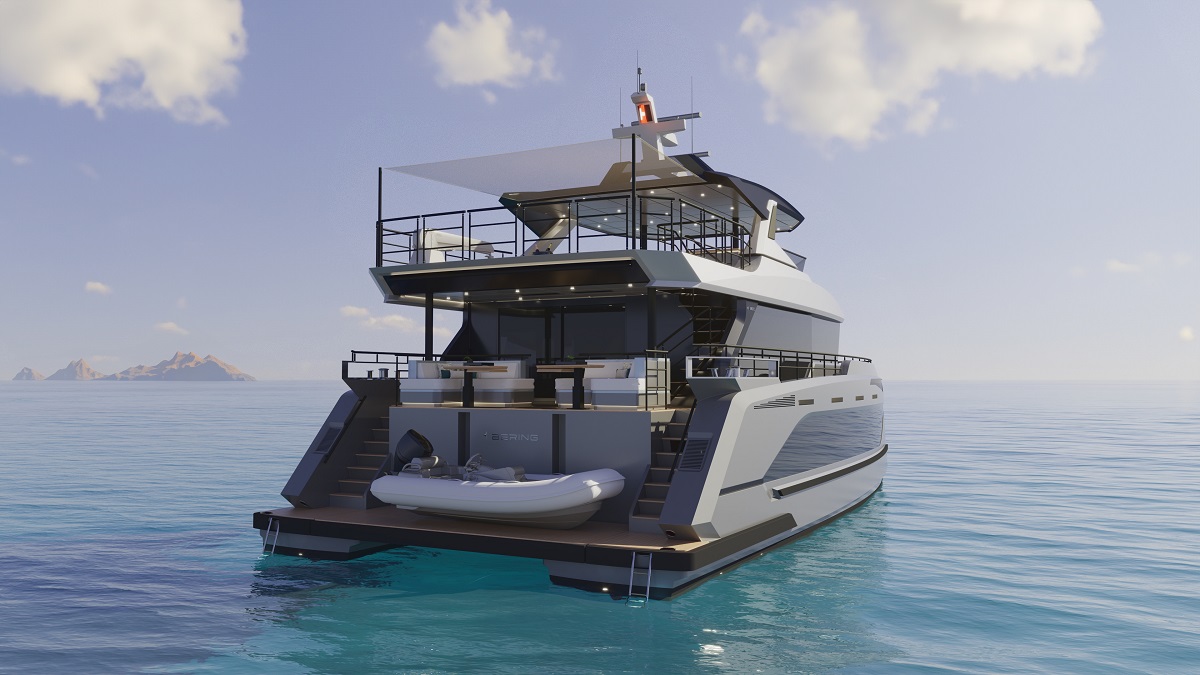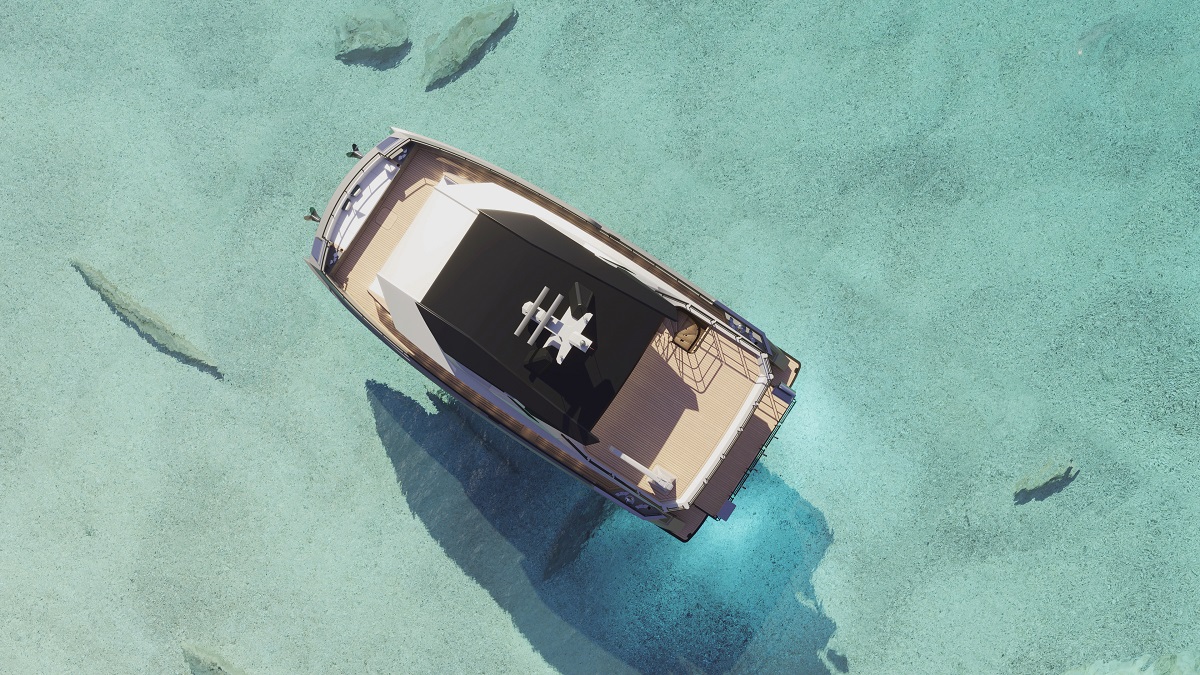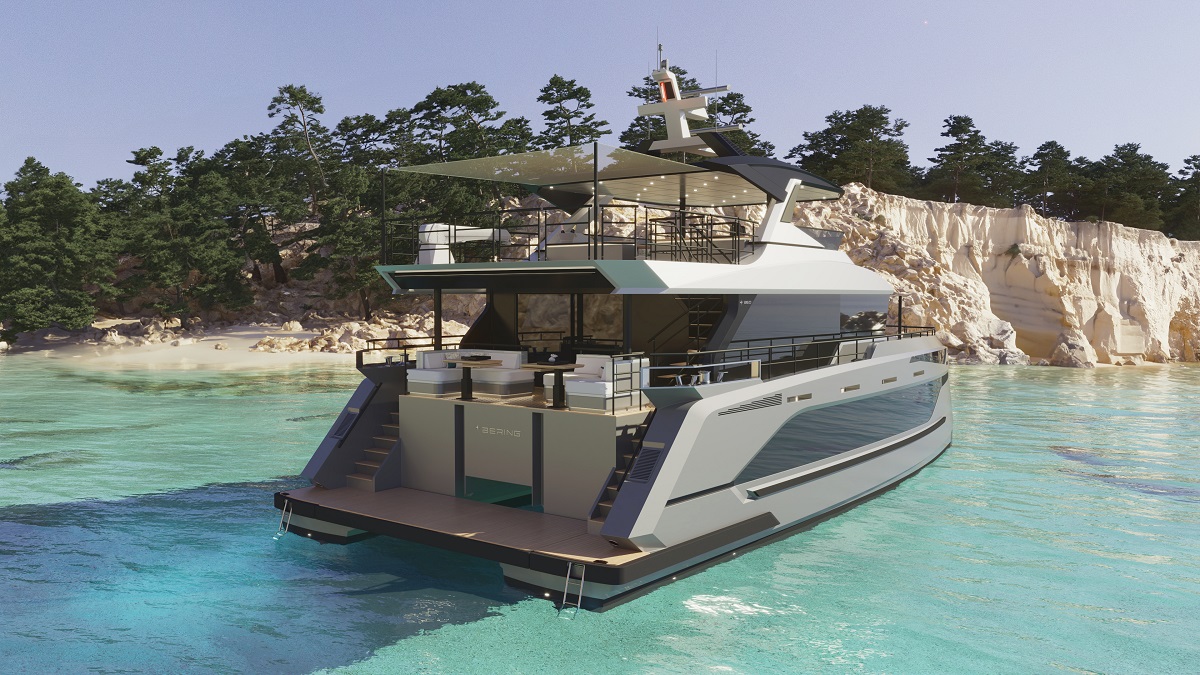Bering BC60 Catamaran Engine Installation
The first hull of Bering’s BC60 expedition catamaran has reached a key construction phase with the installation of its twin main engines. This marks the beginning of the vessel’s mechanical systems integration, bringing the 60-foot aluminum catamaran one step closer to launch.
Choosing the Right Power
Engine selection for any Bering yacht begins long before construction starts. The process involves detailed computational fluid dynamics (CFD) analysis based on the vessel’s specific parameters.
“CFD analyses are carried out based on the vessel’s length and weight,” Mustafa Cin, Deputy General Manager at Bering Yachts, explains. “According to these analyses, we determine how much horsepower and engine speed are required to achieve the desired speed, fuel consumption for a boat of this displacement and hull form.“
For the BC60, Bering Yachts selected Cummins or Volvo engines — the first time the shipyard has specified this manufacturer for a catamaran model. This choice reflects Bering’s flexible approach to engineering. “The company collaborates with several engine manufacturers,” Mr. Cin notes. “Bering Yachts selects the most innovative and suitable engine model based on the performance characteristics calculated for each yacht.“
Every vessel in the Bering Yachts range has unique requirements. “Every vessel has unique characteristics — different maximum and cruising speeds, different hull forms — whether it’s a B145, B88, or an Expedition Catamaran,” says Mr. Cin. “According to these varying parameters such as speed and range requirements, Bering’s engineers determine and select the optimal engine type.“
The result is a propulsion system perfectly matched to the BC60’s intended mission: comfortable, efficient long-range cruising with the stability and volume that only an exploration catamaran platform can provide.
Timing and Sequence
The main engines are installed at this particular stage of construction for practical reasons. “The main engine is the largest piece of equipment in the engine room — it takes up the most space,” says Mr. Cin. “So it’s installed first.”
With the engines now in place, the construction team will proceed systematically through the remaining mechanical installations. After that, the engine alignment is done, followed by the installation of the shaft, propeller, and rudder systems. Then, other machinery and components in the engine room are mounted, and finally, the pipework and electrical connections are completed to finish the machinery installation.
Why Two Engines?
For those wondering why catamarans require two engines, Mustafa Cin, offers a straightforward explanation: “A catamaran, by definition, is a twin-hull vessel. Each hull needs its own engine.”
The twin-engine configuration also provides an added safety benefit: if one engine experiences issues, the vessel still has propulsion to reach safe harbor — a reassuring feature for long-range expedition cruising.
The BC60 Vision
The BC60 represents Bering’s expansion into the expedition catamaran segment, offering an alternative to the company’s traditional steel monohull designs. Built with aluminum construction and full-displacement hulls, the BC60 is designed for extended cruising with the spaciousness and fuel efficiency that catamaran platforms deliver.
With engine installation complete, the first BC60 continues its journey from engineering drawings to ocean-going reality. Each construction phase brings the vessel closer to sea trials and eventual delivery to its owner.
